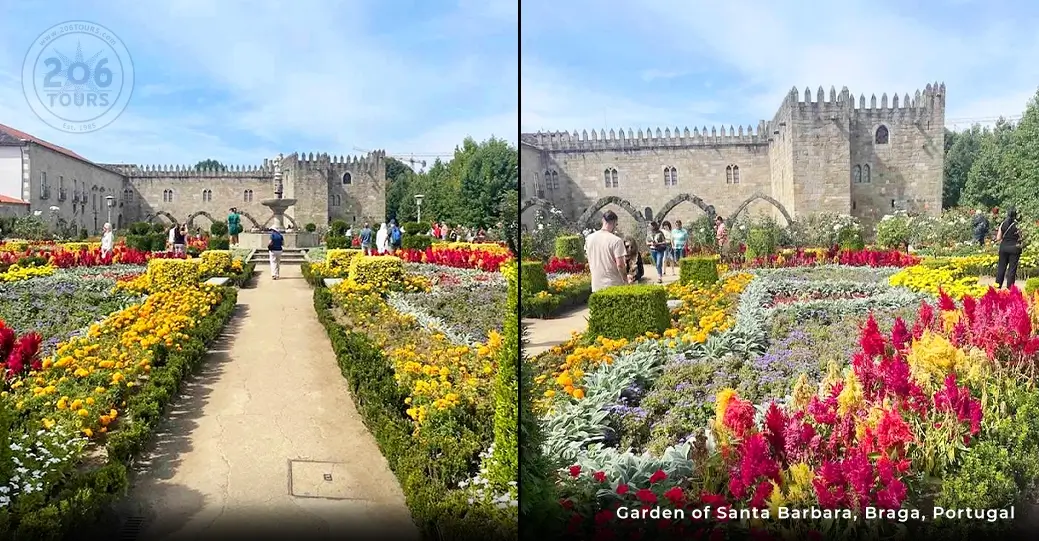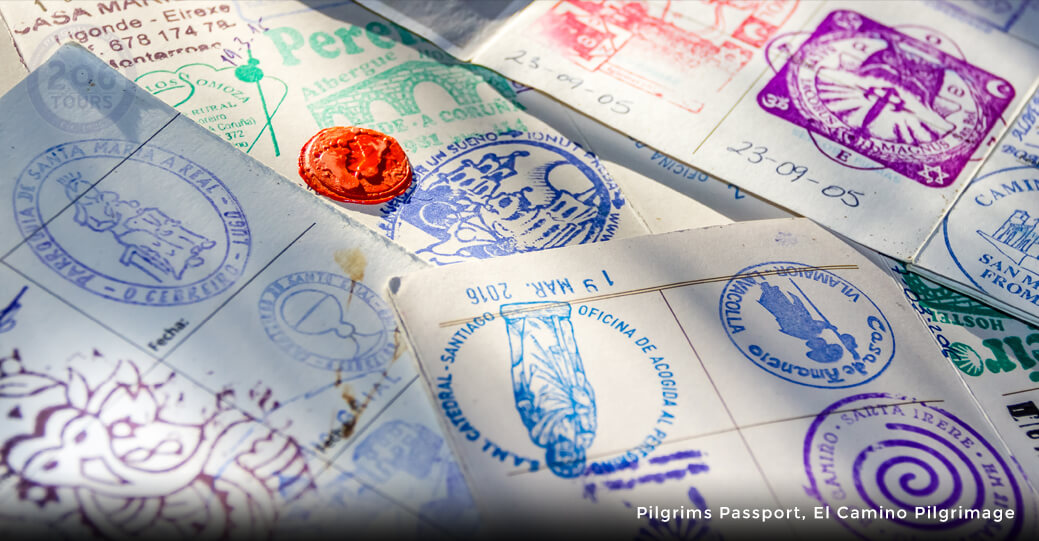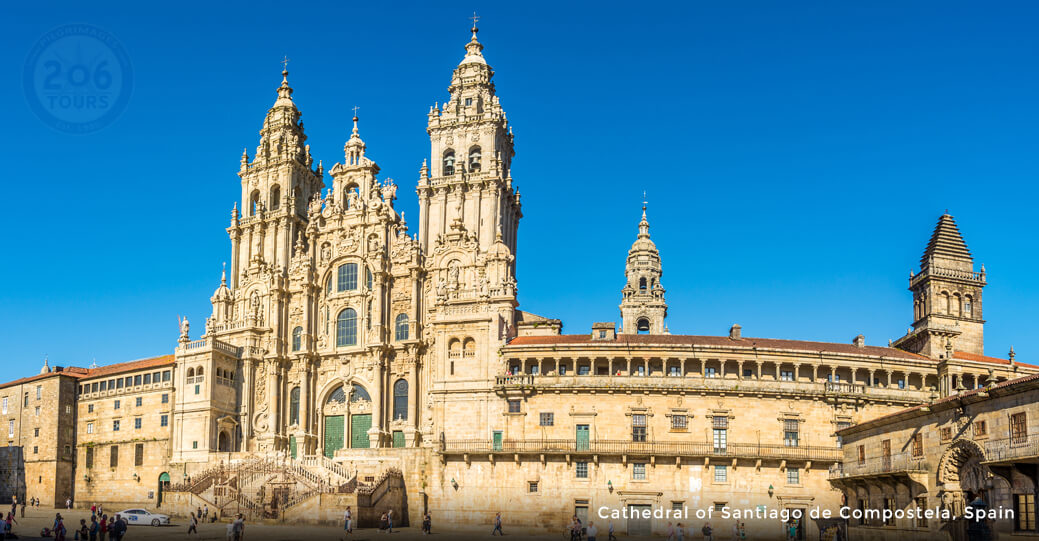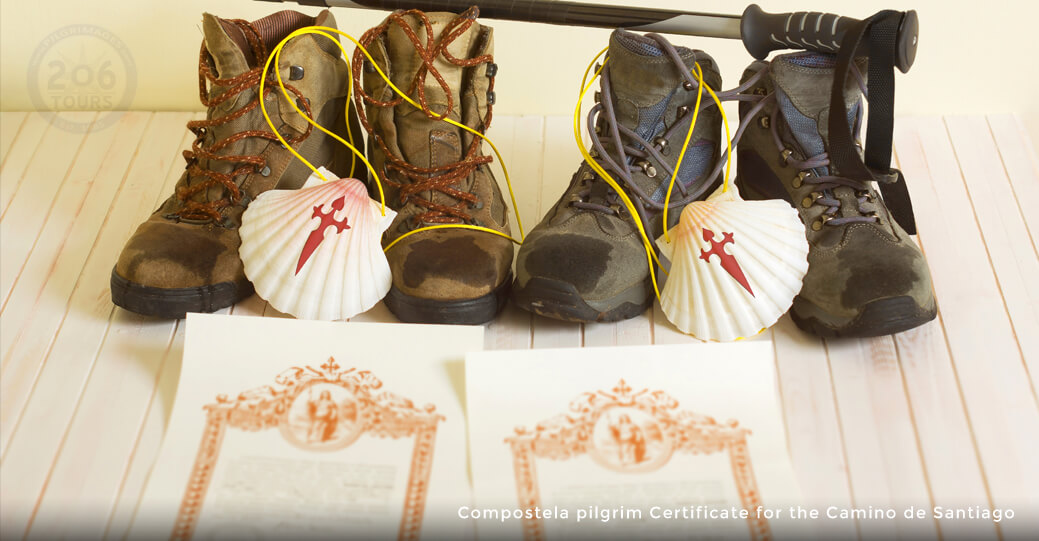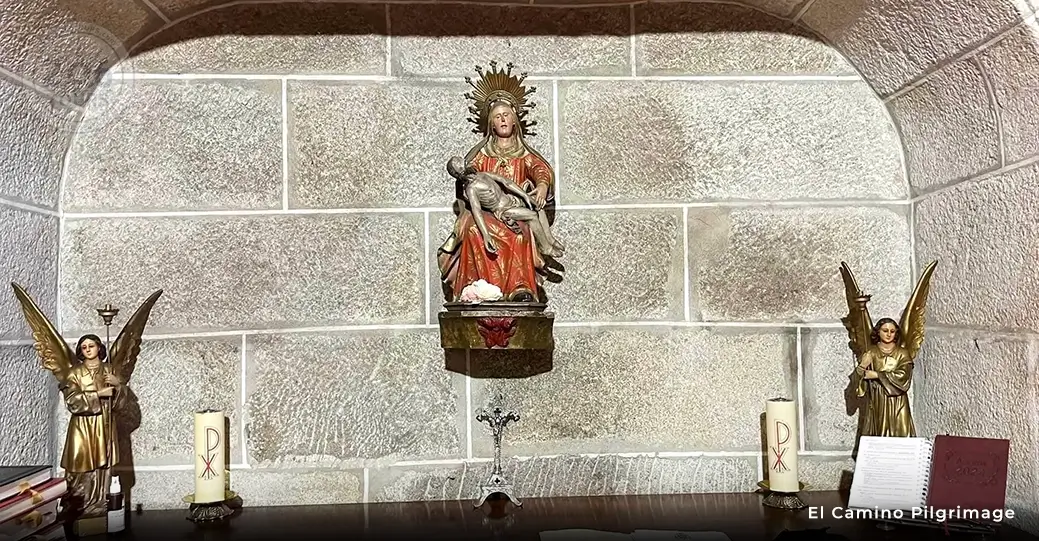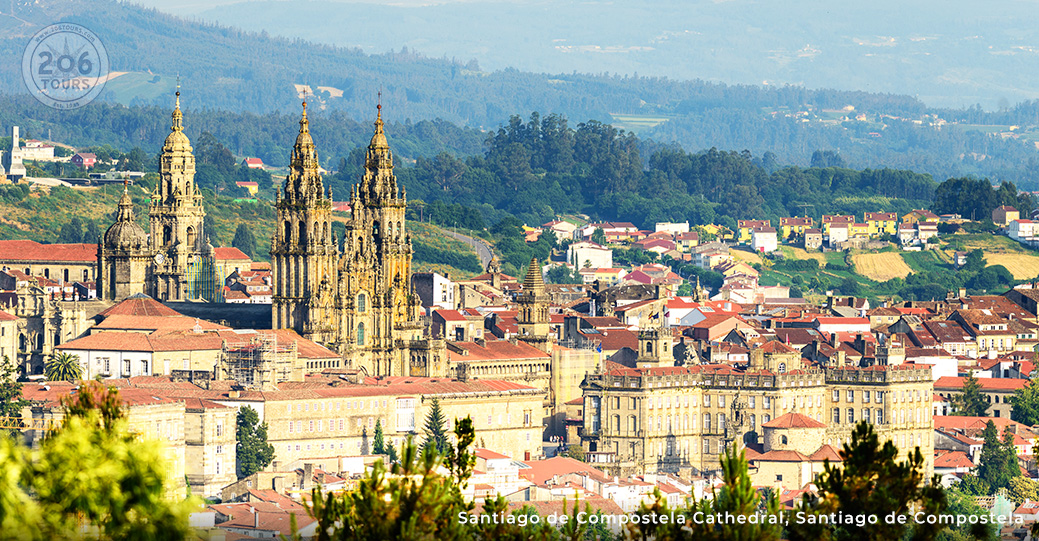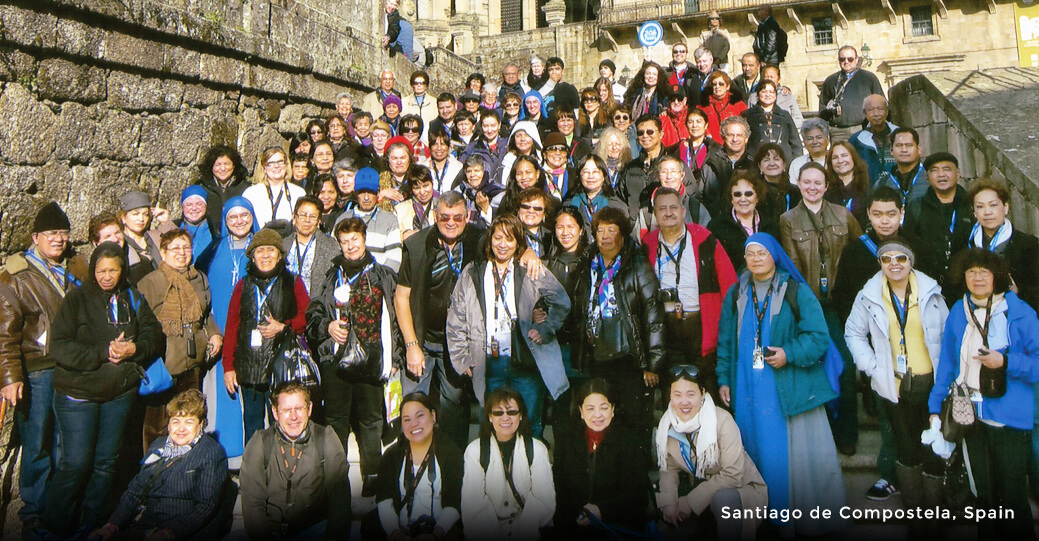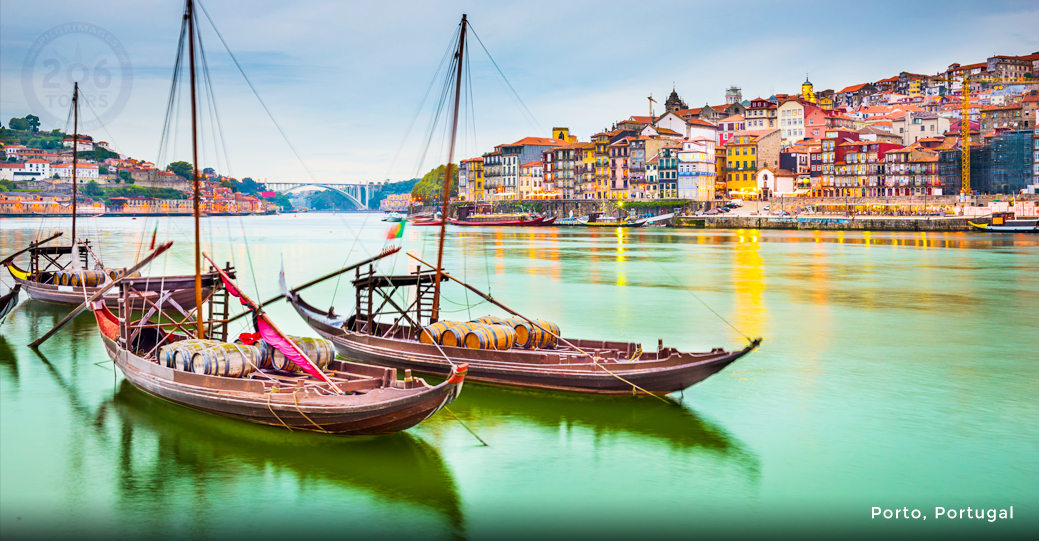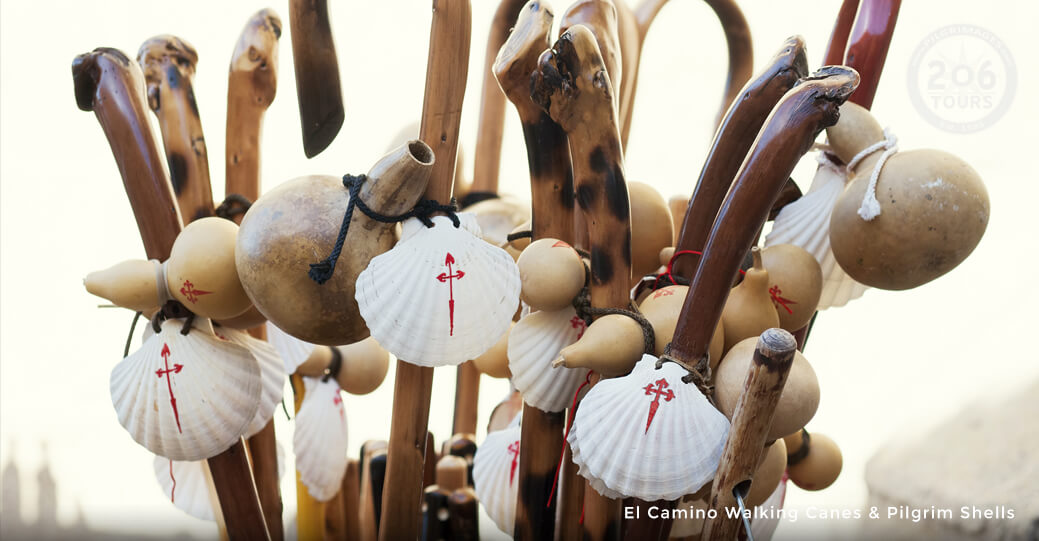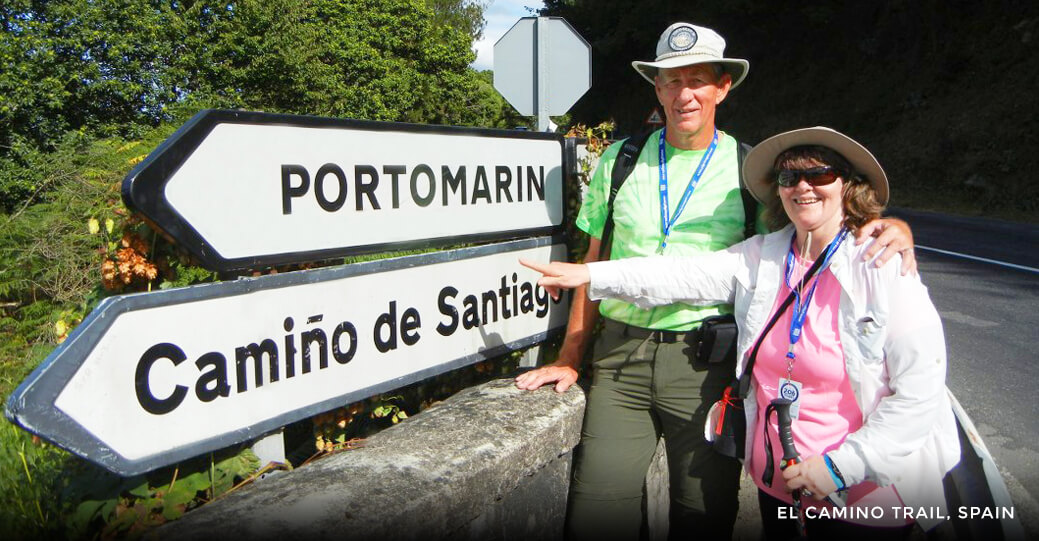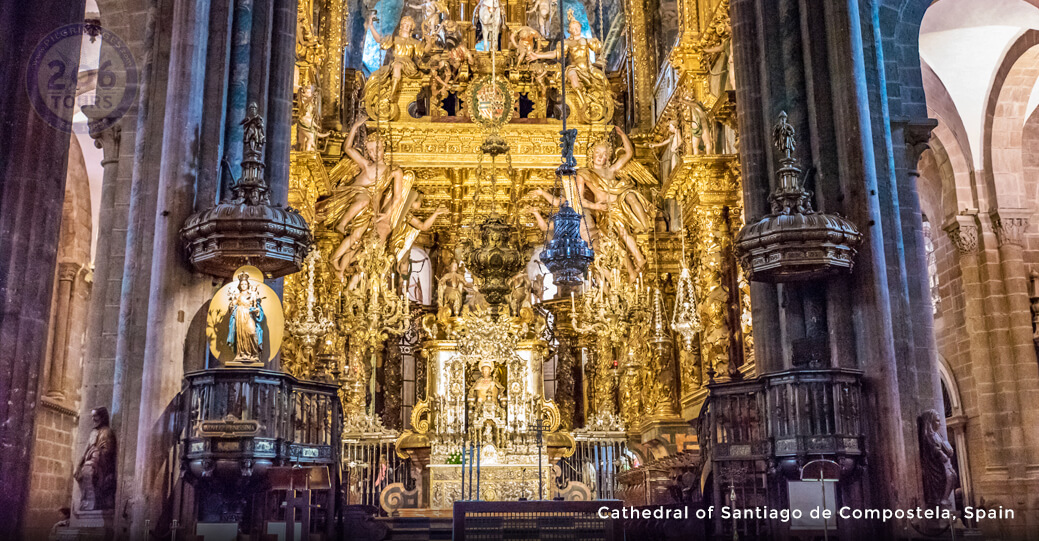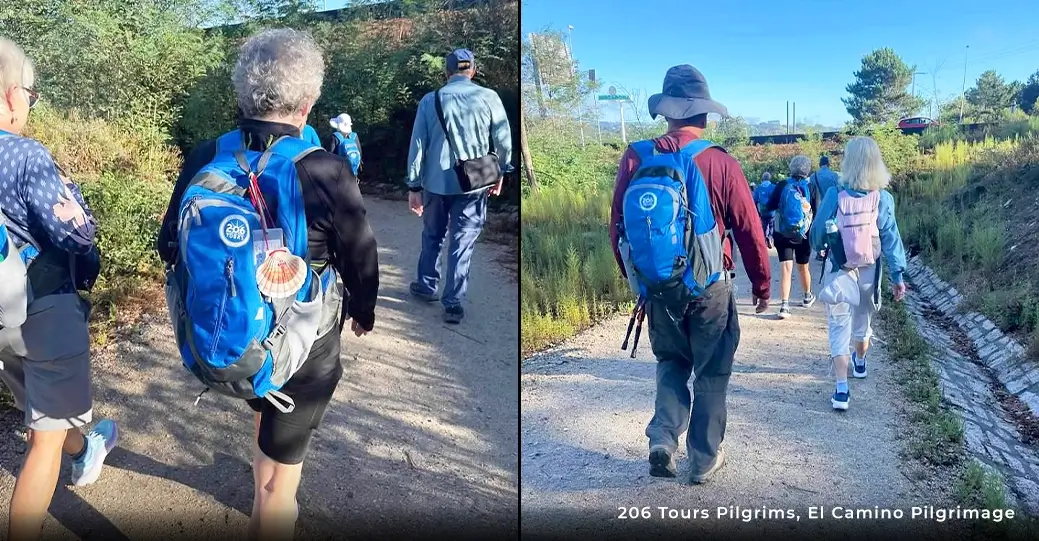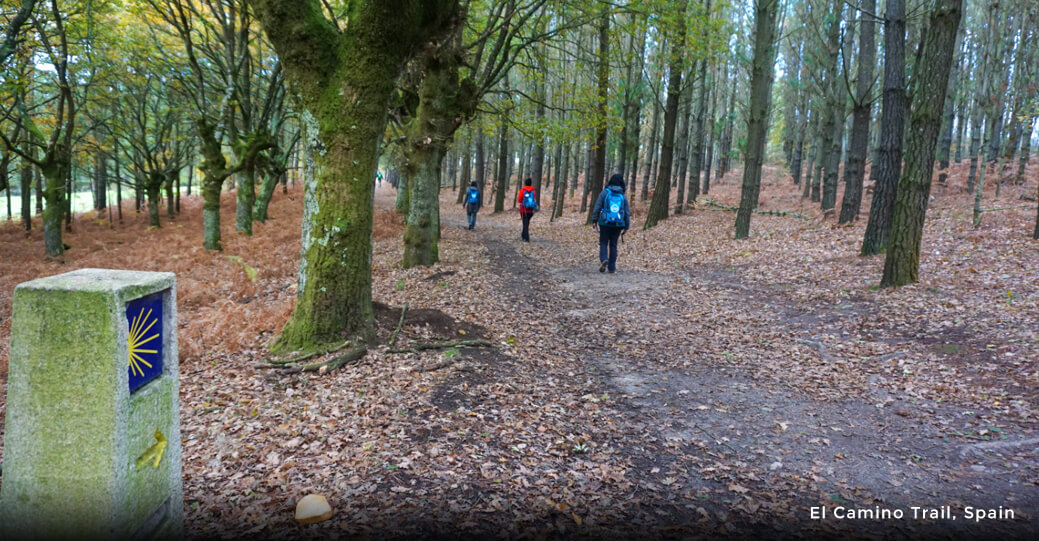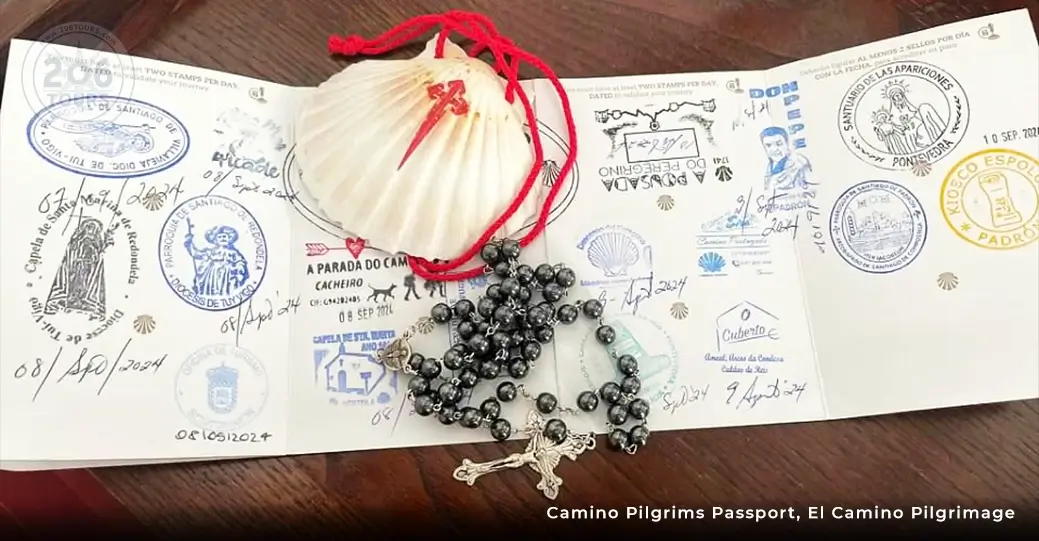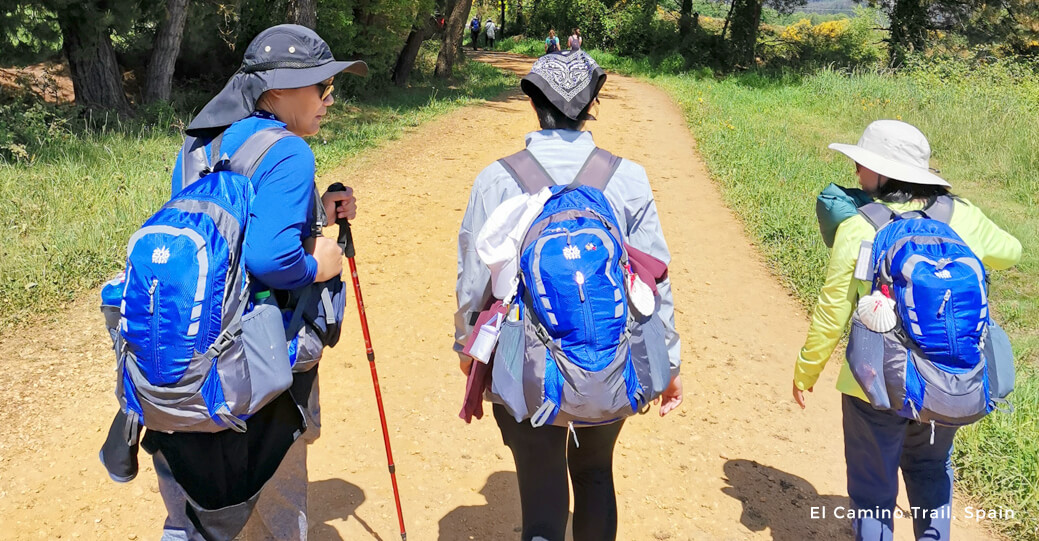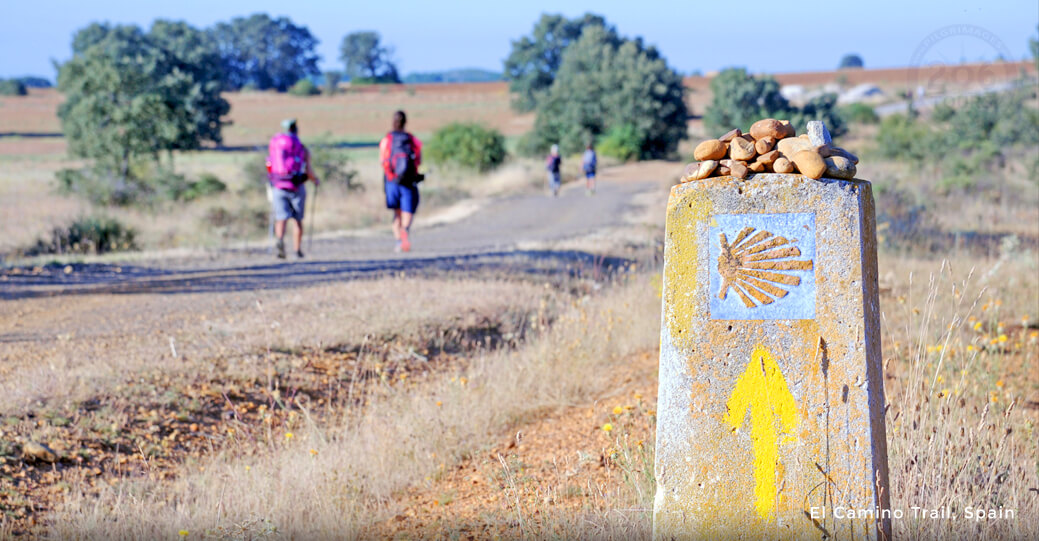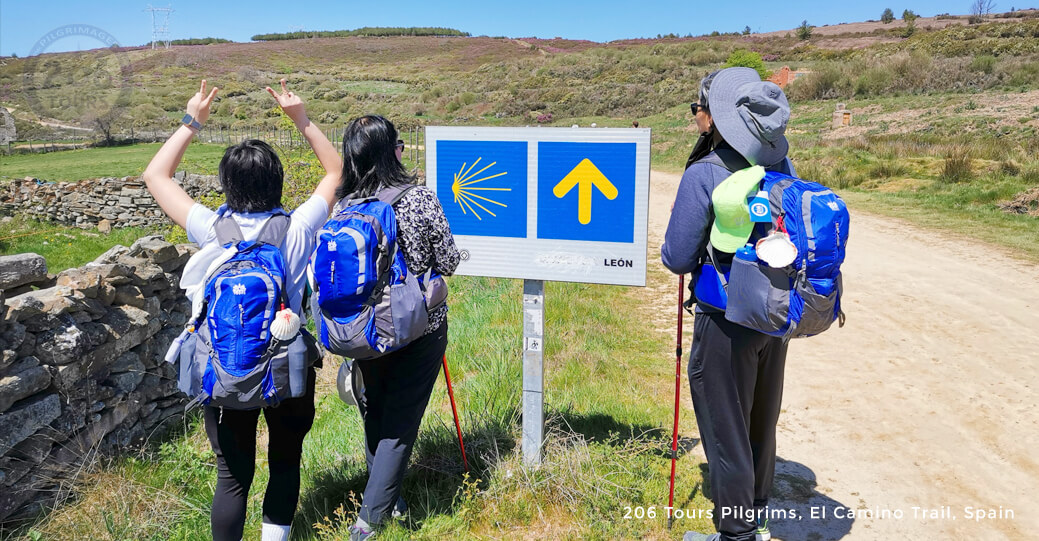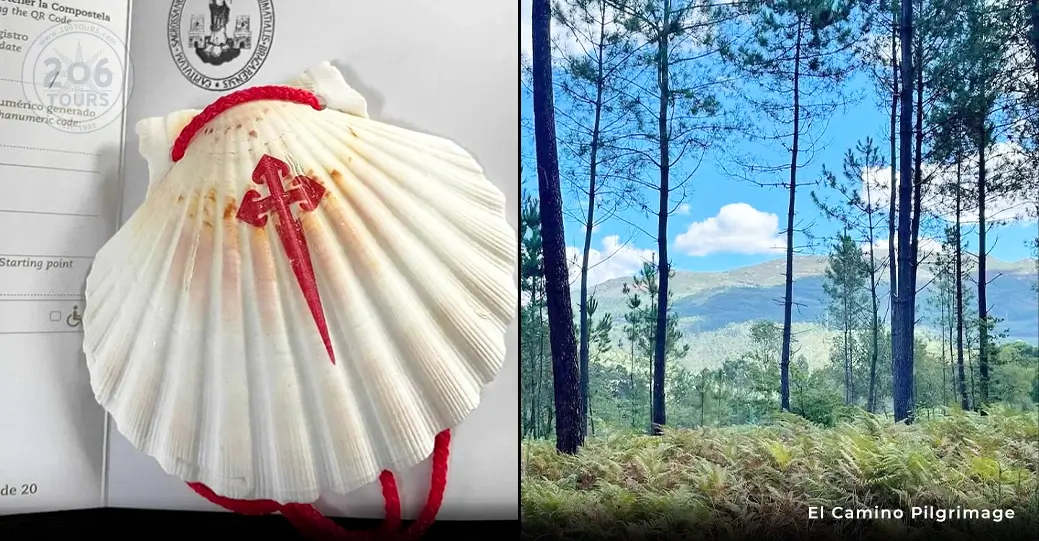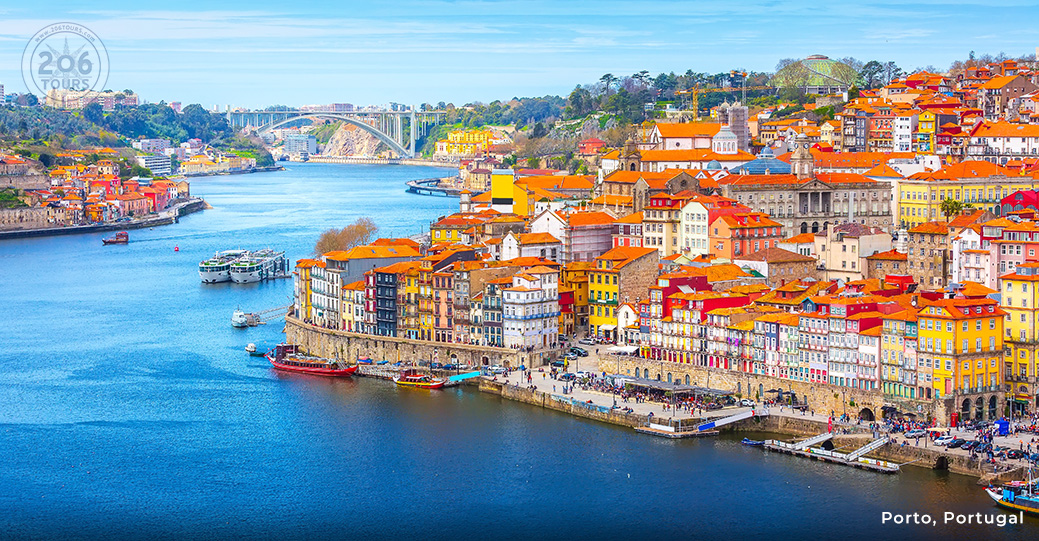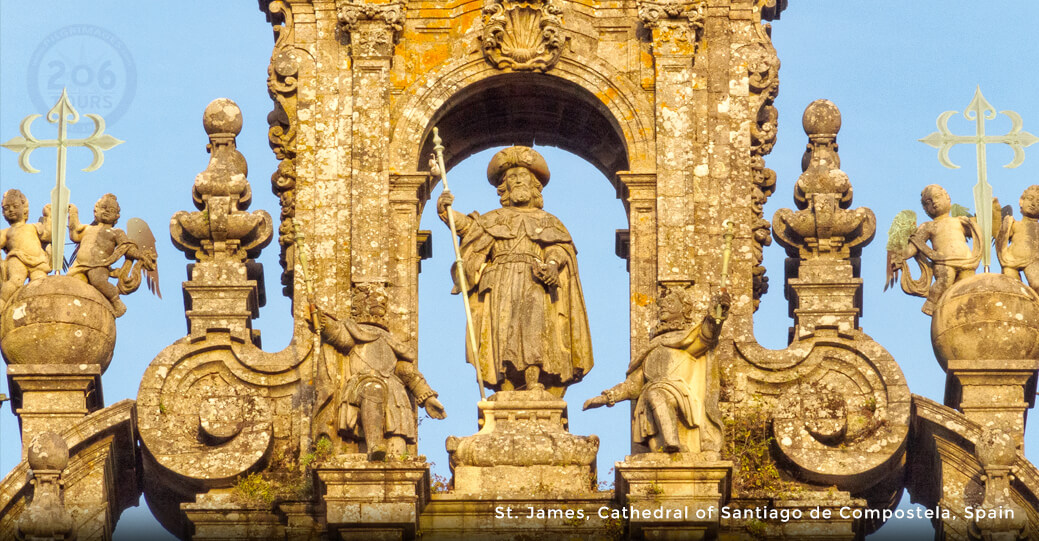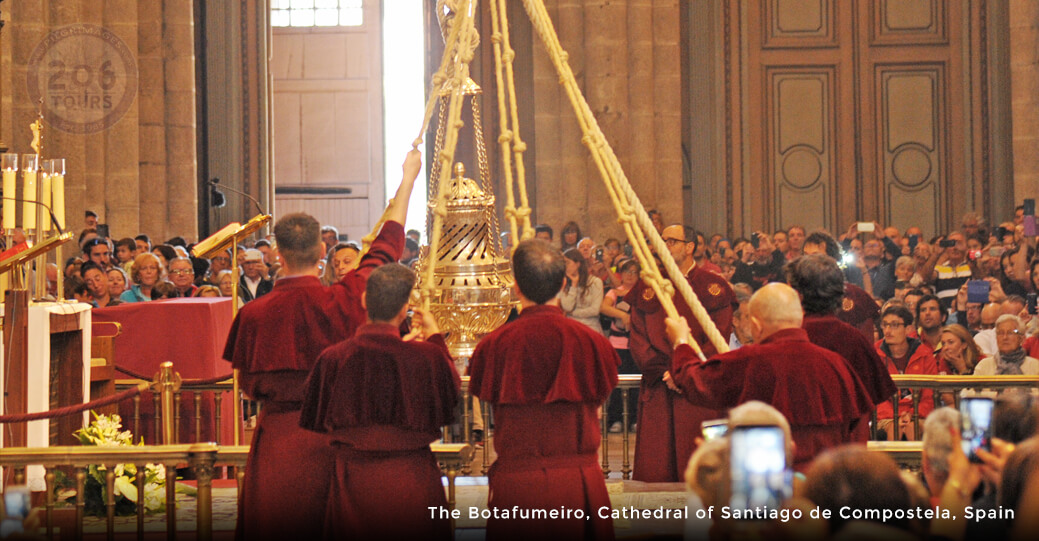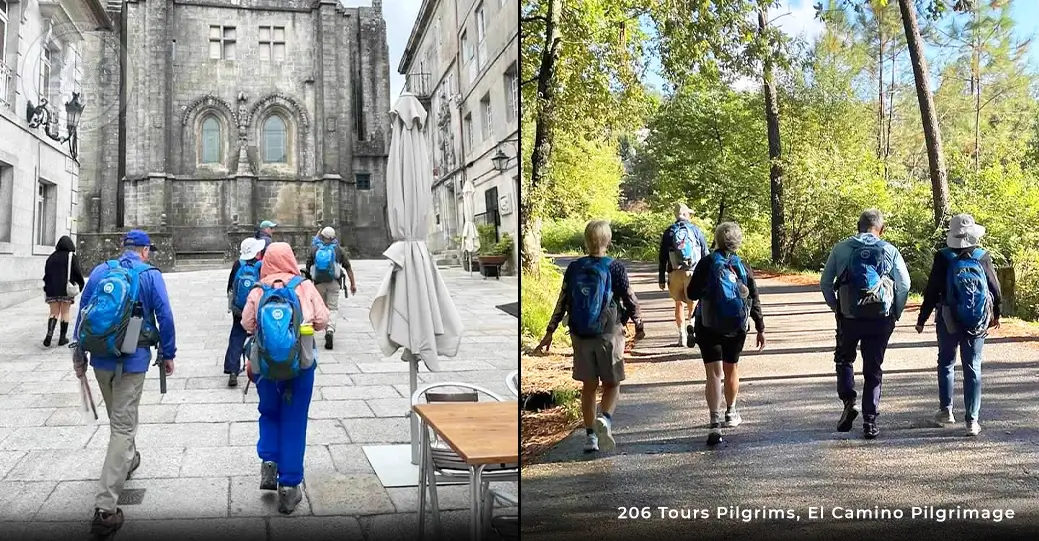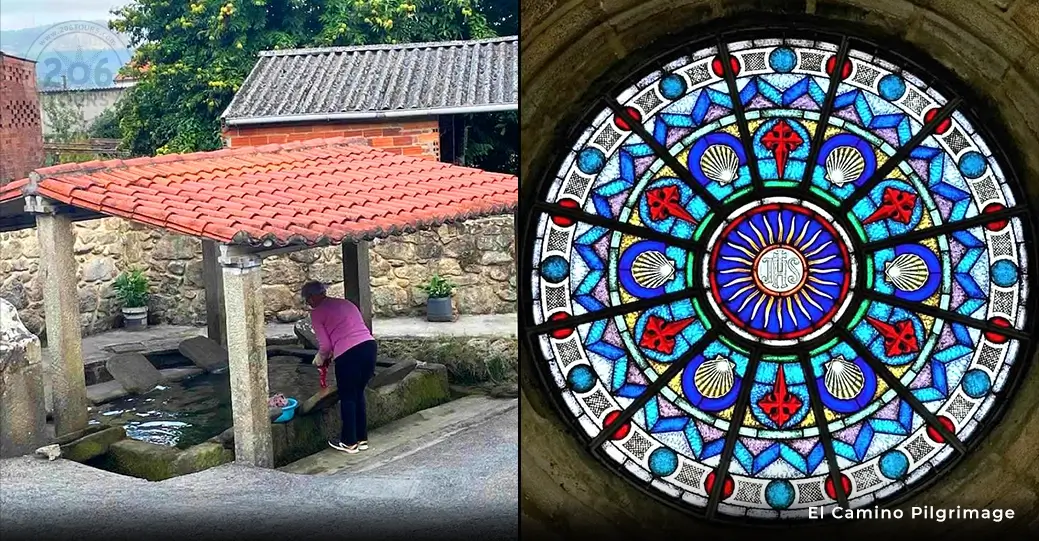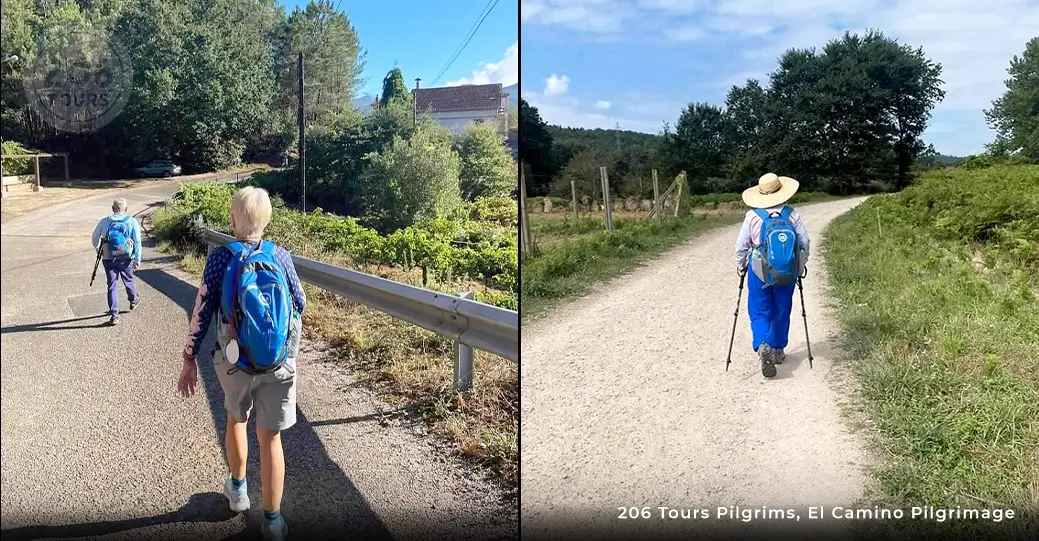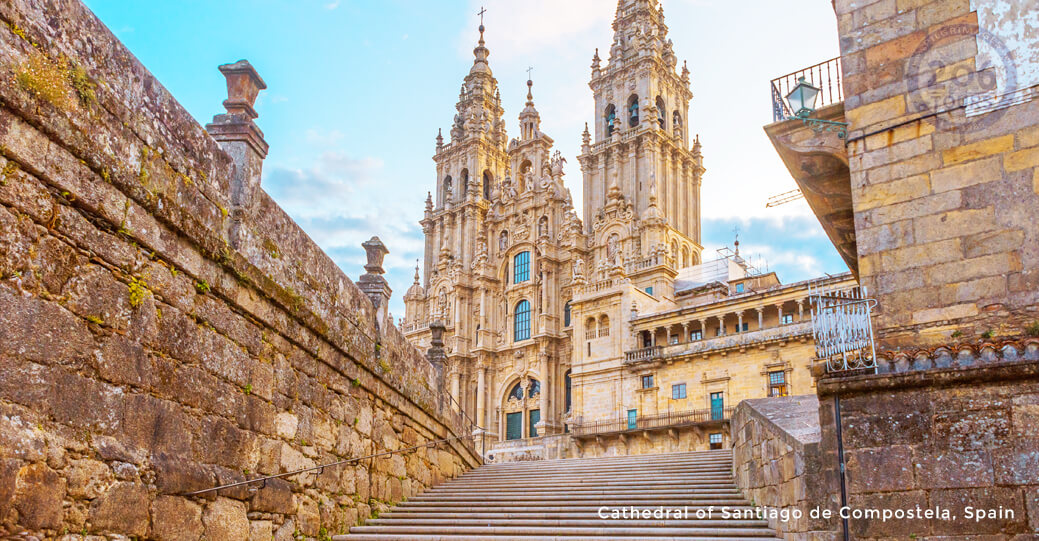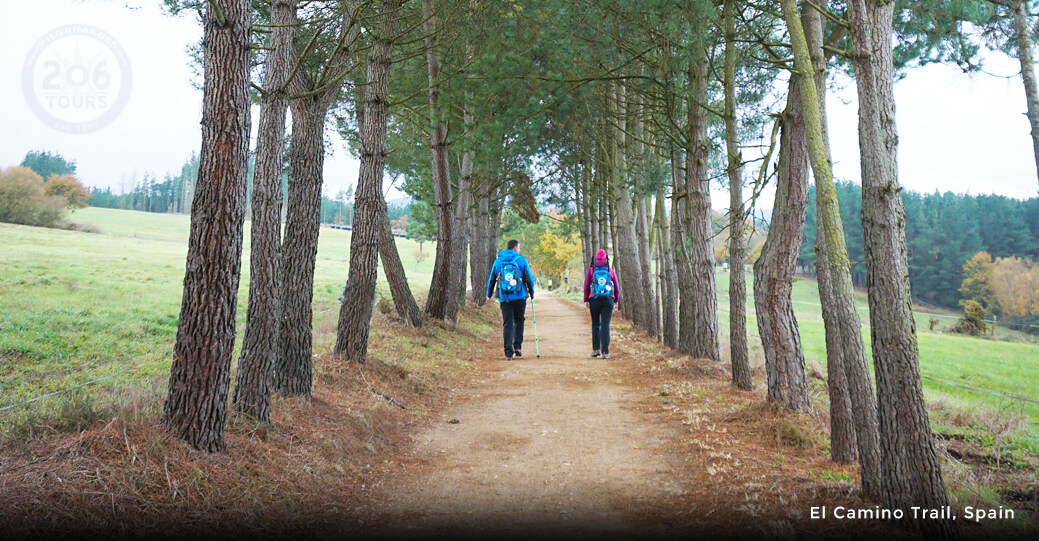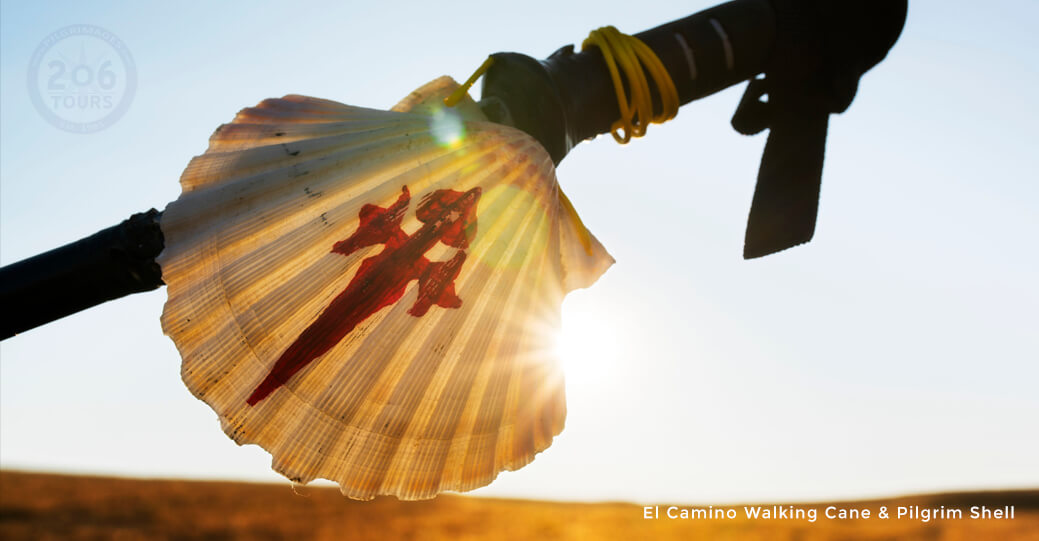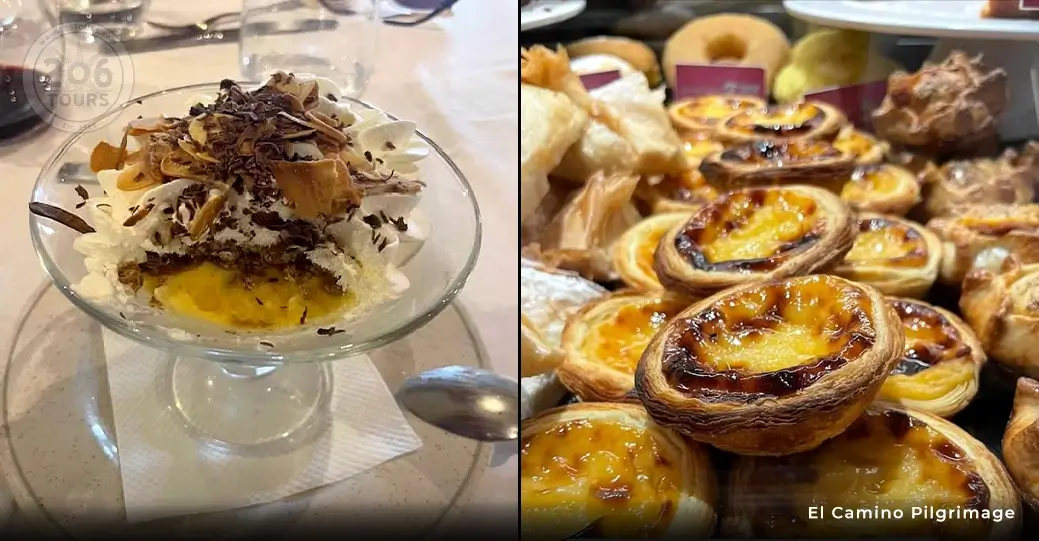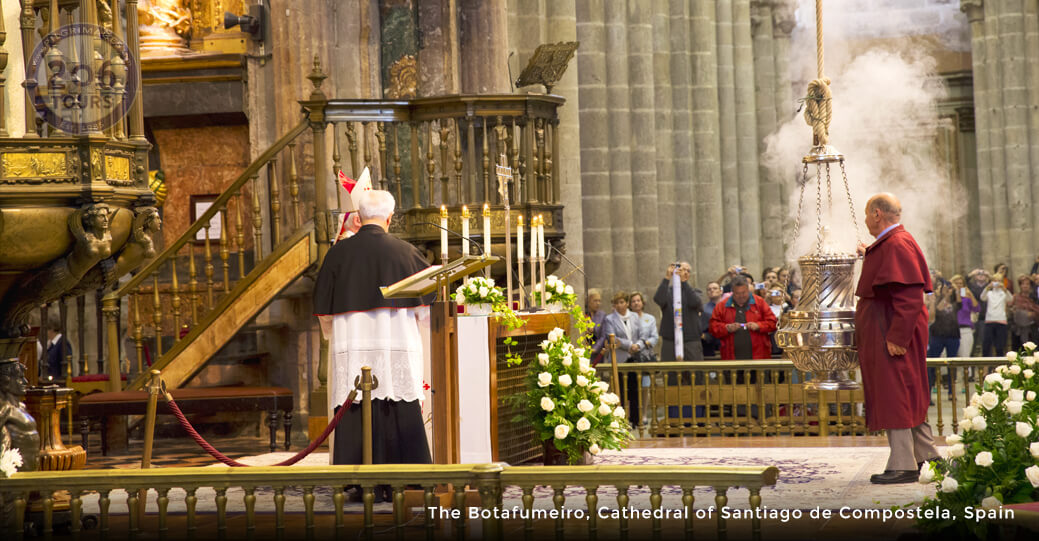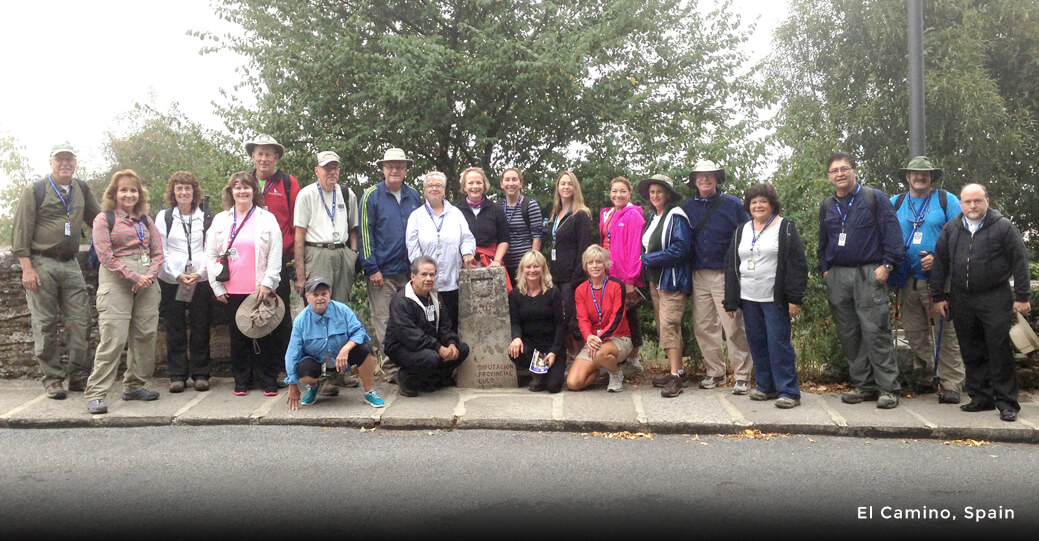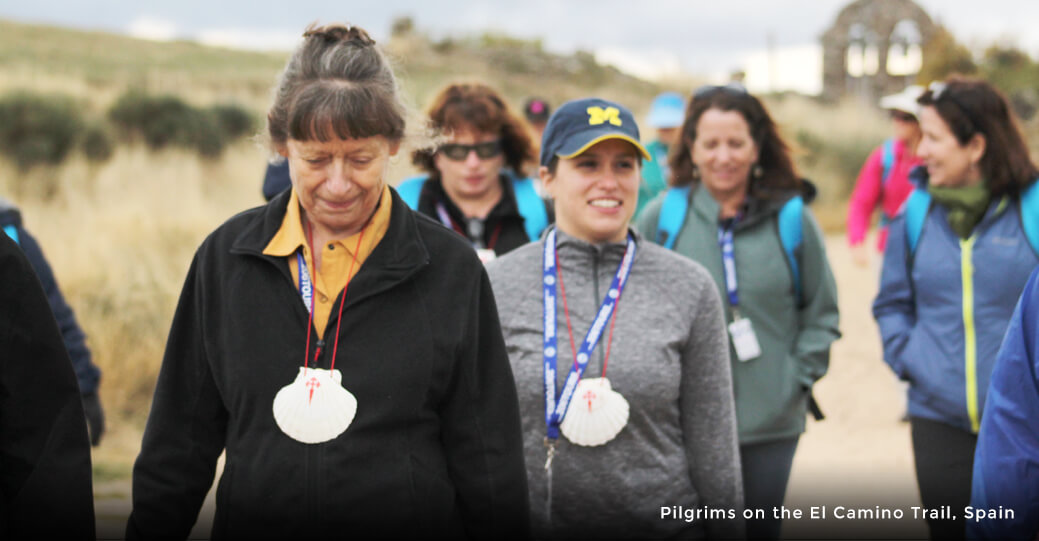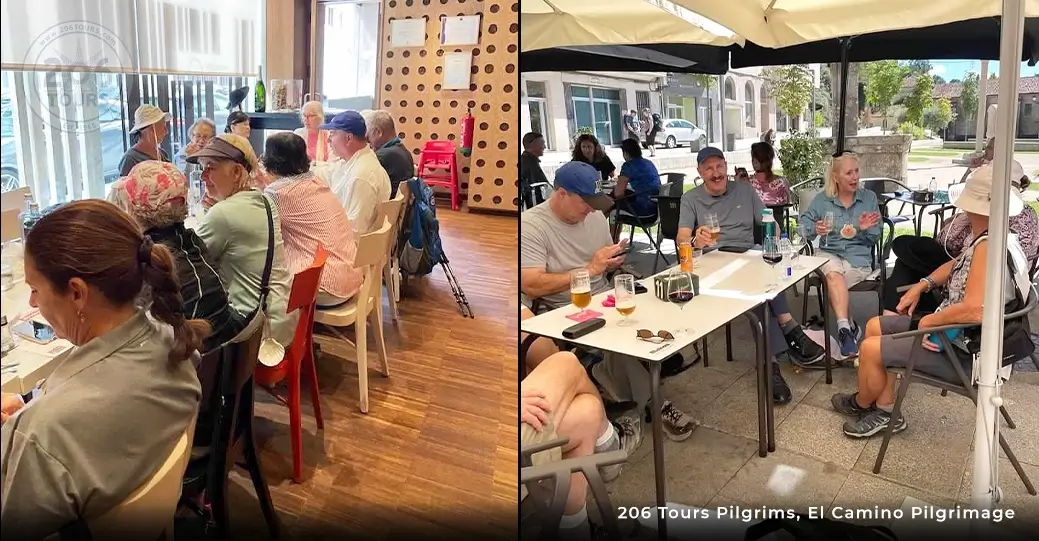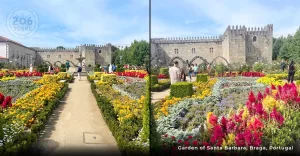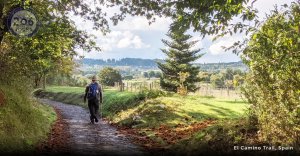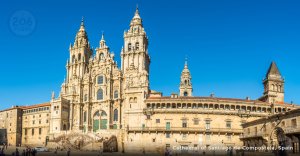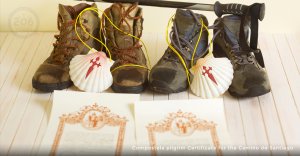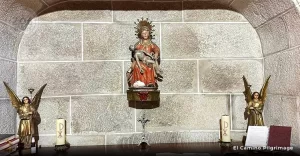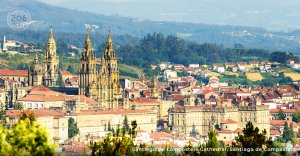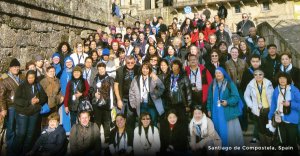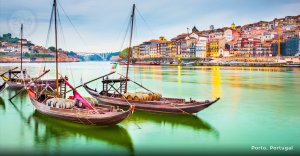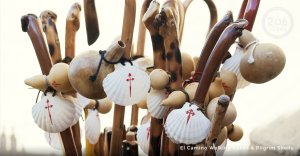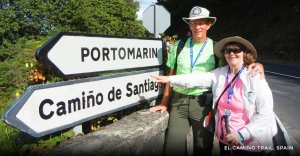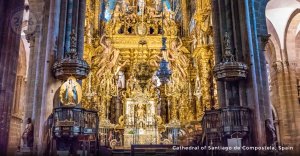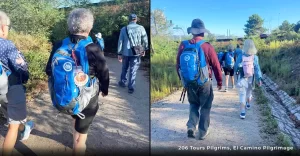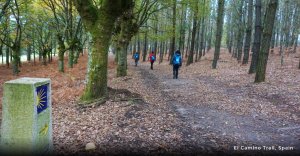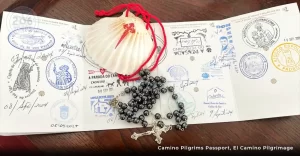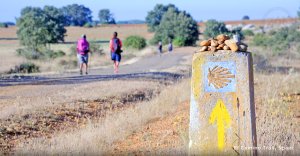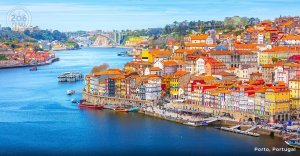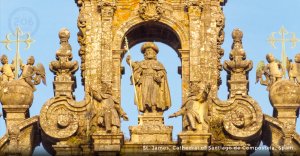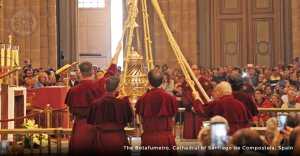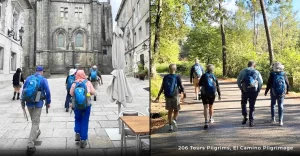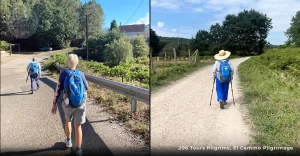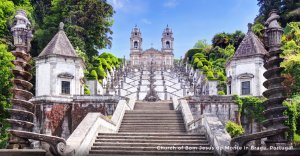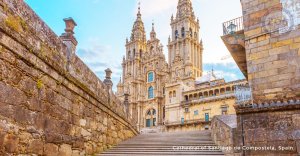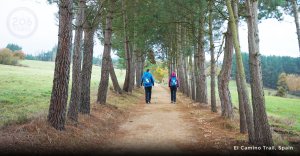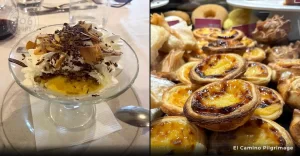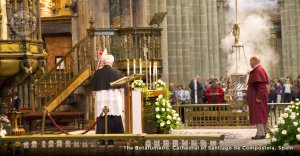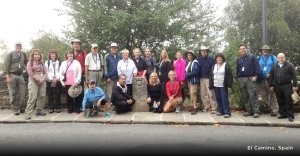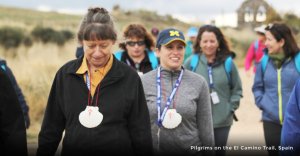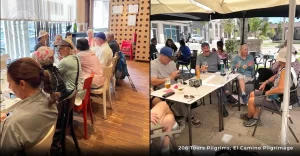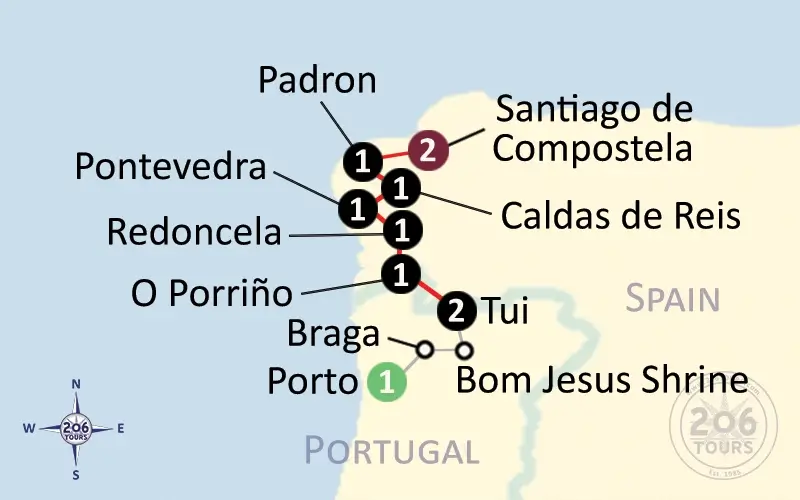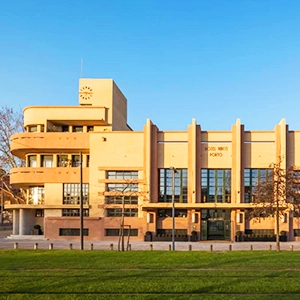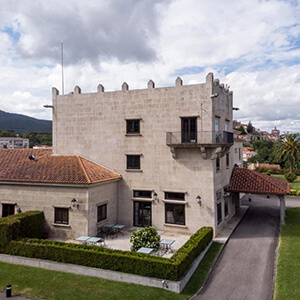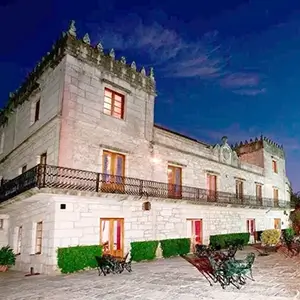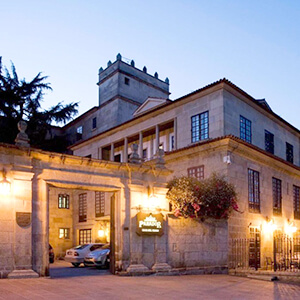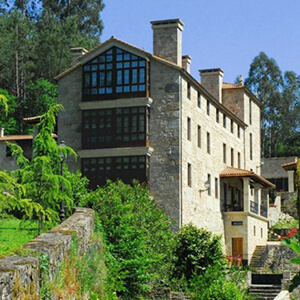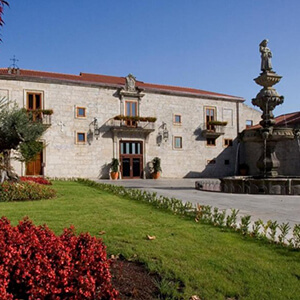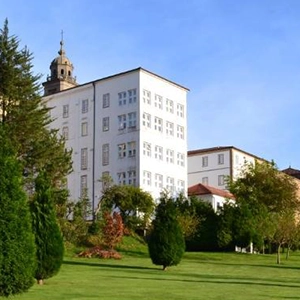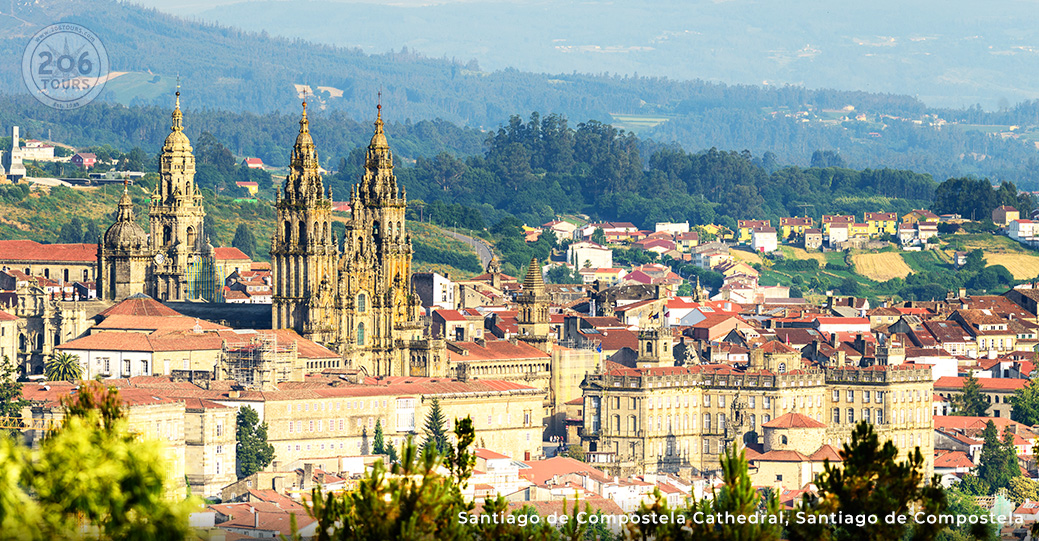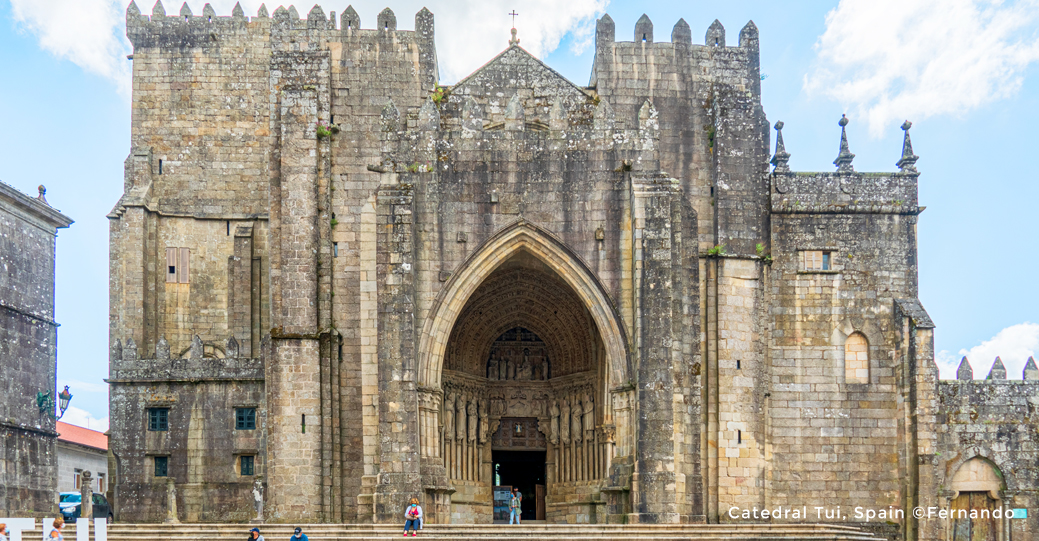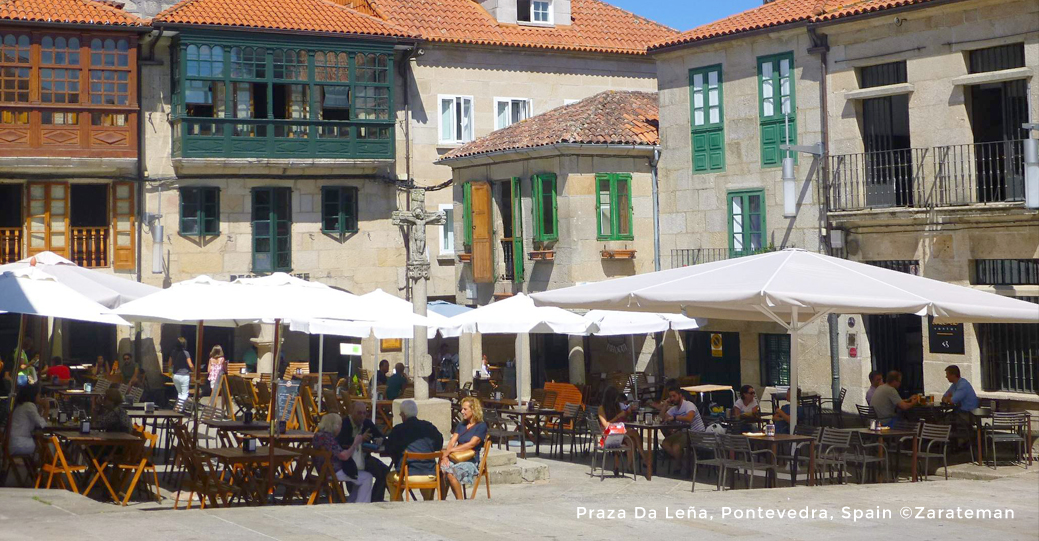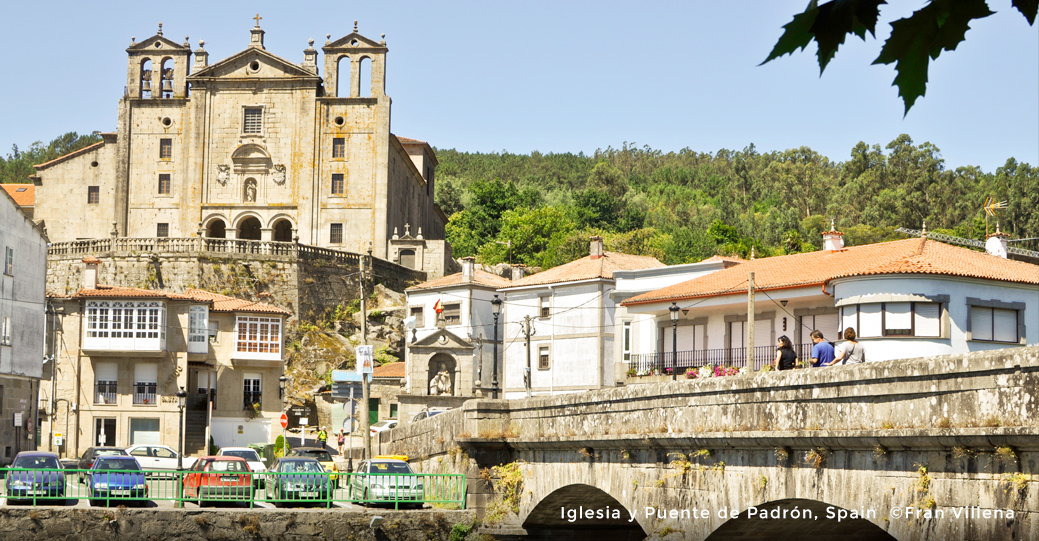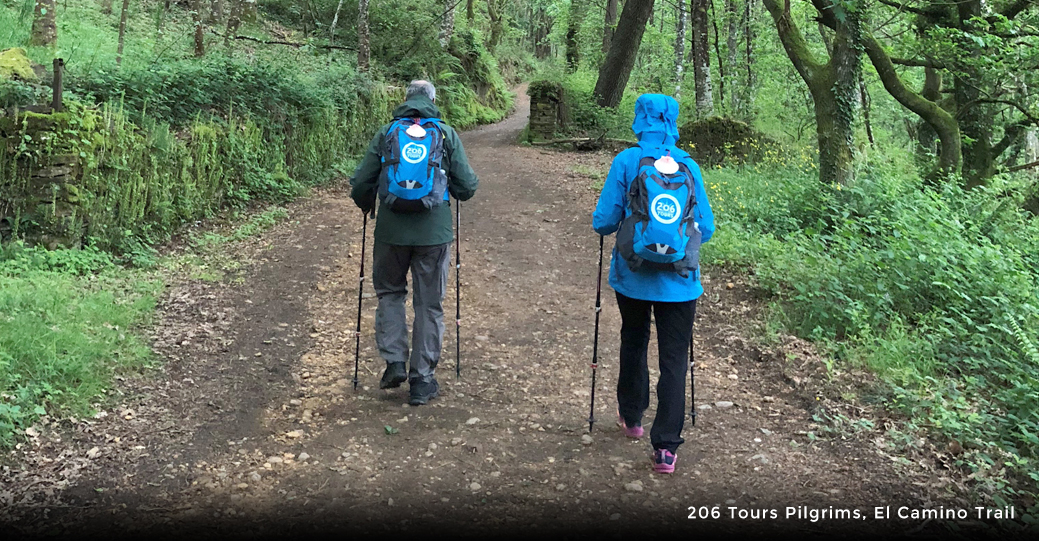Your trip includes
- Round-trip airfare from your desired Airport
- All airport taxes & fuel surcharges
- Hotel accommodations: (or similar) in double occupancy
- ~ 1 night: Vincci Porto, Porto, Portugal
- ~ 2 nights: Parador de Tui, Tui, Spain
- ~ 1 night: Pazo Torres de Agrelo, Pontevedra, Spain
- ~ 1 night: Parador de Pontevedra, Pontevedra, Spain
- ~ 1 night: Torre do Rio or Balneario Acuña, Pamplona, Spain
- ~ 1 night: Hotel Pazo de Lestrove by Pousadas de Compostela or Casa Antiga Do Monte, A Coruña, Spain
- ~ 2 nights: San Francisco Hotel Monumento or Parador de Santiago – Hostal Reis Catolicos, Santiago De Compostela, Spain
- Breakfast, Lunch & Dinner daily
- Wine and mineral water with dinners
- Transportation by air-conditioned coach as per itinerary
- Coach and driver available to assist pilgrims who are unable to complete walking segment
- Tour Guide/Escort throughout
- Sightseeing and admission fees as per Itinerary
- Hotel taxes and Services Charges
- Catholic Priest, Mass daily & Spiritual activities
- Luggage handling (1 piece per person)
- Flight bag & Travel documents
- Tips to hotel porters, hotel staff and restaurants
Not Included
- Anything not mentioned. Tips to your guide & driver.
Itinerary
Day 1: Depart USA
Departure in the evening for the overnight flight to Porto. Meals will be served on board.
Day 2: Arrive in Porto
Upon arrival in Porto, you will collect your luggage in the baggage claim area, and continue to the Arrival’s Hall where you will be greeted by your tour guide and/or driver. Make your way to the bus where your group will transfer to your hotel. In the afternoon we will visit Sao Francisco Church with beautiful Gothic interior. Following Mass, we visit The Clerigos Church with iconic bell tower, continue panoramic view of the Dom Luís Bridge, Church of Saint Ildefonso , a baroque style church with tile façade and the Maria Pia Bridge. Return to your hotel for dinner and a restful overnight in Porto before your walking tour begins!
Day 3: Porto | Braga | Bom Jesus Shrine | Tui
(Walking Day: 3-4 miles / 4.8-6.4 km)
This morning, you will enjoy breakfast , followed with a transfer to Braga. Braga is a lively city, one of the oldest in the country. Visit the Shrine of Bom Jesus do Monte (“ Good Jesus of the Mountain “ ) to celebrate Mass. n 1722 the Archbishop of Braga authorized the construction of a Sacred Way, for the faithful to walk the Stations of the Cross for penance and contemplation. In the afternoon walk a brief 3-4 miles. Continue to the cathedral town of Tui in Galicia. Tui is separated from Portugal by the River Minho. Check into for dinner and overnight.
Day 4: Tui | O Porriño
(Walking Day: 11.8 miles / 19 km)
Today is the day that your walking pilgrimage (El Camino) to Santiago de Compostela officially begins! Following breakfast, your group will be walking across tranquil woods, farmland and peaceful hamlets. With the guidance of Our Lord, and through the spirit of St. James the apostle, you will become an authentic pilgrim by journeying along the physical road, as well as, the spiritual one. Your first official day of walking will culminate in O Porrino. Enjoy dinner followed by an overnight.
Day 5: O Porriño | Redoncela
(Walking Day: 9.9 miles / 16 km)
This morning, you will enjoy breakfast at your hotel and journey from O Porrino, through the woods to the Rendoncela. Known for its famous railway viaducts built in the nineteenth century. Due to these infrastructures Redondela is known under the nickname “Village of the viaducts.” Dinner and enjoy a restful overnight in Rendoncela.
Day 6: Redondela | Pontevedra
(Walking Day: 11.8 miles / 19 km)
Breakfast will be served at your hotel. Your pilgrimage continues as you will travel from Redondela to Pontevedra, historically famous, culturally rich and has a significant number architectural attractions worth seeing. It has a very well preserved medieval town center along with many small and popular squares. View the “Capela da Virxe Peregrina” , a highly unusual building situated in the square of the pilgrim. This chapel is unique and distinctive. It was built in 1778 and is positioned on the main pilgrim’s route that leads to Santiago de Compostela from Galicia’s neighbor Portugal. As you explore Pontevedra , you will notice joy etched in the faces of the pilgrims. Although they have traveled a long distance, they are not weary. With God and St. James guiding their paths, excitement and anticipation continues for their arrival in Santiago. Dinner and overnight.
Day 7: Pontevedra | Caldas de Reis
(Walking Day: 14.3 miles / 23 km)
After breakfast we will continue our journey to Caldas de Reis. Today we will pass through the villages of Alba, A Portela and Briallos. In Alba the Church of Santa Maria de Alba is beautiful, in A Portela you will find the church of San Mamede and in Briallos, a small village of 400 people where there is an albergue. Arrival in Caldas de Reis, this town is well known for its hot springs and it sits at the confluence of Bermaña and Umia rivers. Dinner and overnight.
Day 8: Caldas de Reis | Padron
(Walking Day: 11.8 miles / 19 km)
This morning, you will enjoy breakfast. Today’s route passes through San Miguel de Valga, Cimadevila, Fontelo and the river Ulla. The church of Santiago de Padron is a very important stop for pilgrims. Inside the church, under the altar, we can find the Pedrón, a granite block that was tied to the boat that carried apostle St James. Tonight we’re staying at Padron, which is significant as this is where Saint James Santiago first preached the word of the Lord. Enjoy dinner followed by a good night rest.
Day 9: Padron | Santiago De Compostela
(Walking Day: 15.5 miles / 25 km)
Today, you will culminate the walking portion of your journey! The walk continues in the same direction as the previous day. You leave Padrón and go past the church of Santiago towards the Colegiata of Iria Flavia, where Nobel Literature Prize Camilo José Cela is buried. The day continues through Osebe, on paths and main roads, through villages and woodlands, until you reach O Milladoiro, here you will know that you are approaching Santiago because at this point, you will be able to see the spires of the Cathedral. Following lunch, you will complete your walking journey and arrive at the Cathedral of Santiago de Compostela. Upon arrival, feel free to say a small prayer in thanksgiving to Our Lord for keeping you safe throughout the walking pilgrimage. At this time, you will check-in to your hotel and enjoy free time to explore Galicia’s capital, Santiago. This evening you will enjoy a marvelous dinner, followed by a very restful overnight in Santiago de Compostela.
Day 10: Santiago De Compostela
This morning you will awaken in the beautiful city of Santiago de Compostela! Formed by Galician granite, this Cathedral is one of the finest architectural examples in Europe as it encompasses Romanesque, Gothic and Baroque styles. Additionally, the Cathedral contains numerous and valuable pieces of art that truly captivate the eye. Upon entering the Cathedral, tradition will lead as you will hug the dazzling statue of St. James. Following this intimate embrace, you will descend into the crypt where the Patron Saint of Pilgrims’ relics are kept. Following your visit, you will enjoy free time for lunch on own before your sightseeing tour of the city. Some stops on your tour include the Obradoiro Square, Fonseca Palace, Gelmirez Palace, Franco Street, and much more. Your evening will be free to spend at your leisure until a final dinner with your group. You will spend a final overnight in Santiago de Compostela.
Day 11: Depart Santiago de Compostela
(Revel in the Memories)
After breakfast say “hasta luego” as the bus transports you to the airport for your flight home.
*206 Tours Disclaimer:
Occasionally local religious and national holidays, weather, traffic conditions and other events may necessitate changes in the sequence of events or the missing of certain events/places. Though every effort will be made to follow the itinerary, it should be considered as an indication, rather than a contract of events and places to be visited.
Would you like to arrive earlier or stay later?
Let us know at the time of registration if you would like to arrive earlier, or stay later, than the scheduled tour dates, and pending availability, we will change your airline reservations accordingly, additional fees may apply. Pre- and/or post-stays at the hotel will cost an additional fee. These options should be available to you when registering online, or simply contact us: sales@206tours.com



